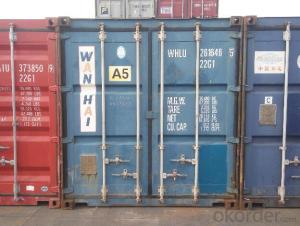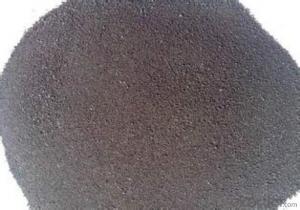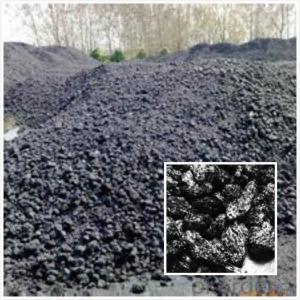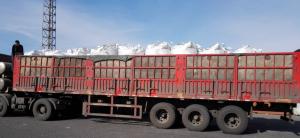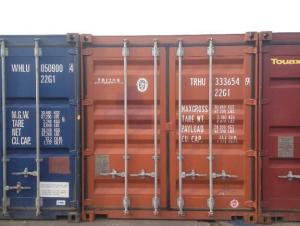Calcined Petroleum Coke as Injection Carbon
- Loading Port:
- Shanghai
- Payment Terms:
- TT OR LC
- Min Order Qty:
- 19.6
- Supply Capability:
- 1006 m.t./month
OKorder Service Pledge
OKorder Financial Service
You Might Also Like
Intrduction
Carbon additive to ningxia production of anthracite as raw material, after washing, crushing, high temperature calcination, filter, etc. Craft refined and become.This is after the anthracite calcination generated high carbon content and low volatile component of the new product, is an ideal raw material to make steel.
Calcined Petroleum Coke comes from delayed coke which extracted from oil refinery. Although Calcined Petroleum Coke contains a little bit higher level of sulfur and nitrogen than pitch coke, the price advantage still makes it widely used during steel-making and founding as a kind of carbon additive/carburant.
Features
In the smelting process for reducing agent. Performance: replace the traditional oil carbon additive, decrease the cost of steelmaking. Features: low ash. low sulfur,low phosphorus, high calorific value. High ratio resistance,high mechanical strength,high chemistry activity. It is mainly used for metallurgy reductant inoculants, casting, refractory materials, machinery, electronics and other fields.
1) high absorption rate, it can be absorbed up to 90%.
2) absorbed more quickly than other carbon additive; no residue remains in furnace.Good quality
3) low Sulfur, the lowest can reach below 0.20%; low nitrogen, normally below 200ppm (0.02%)
Specifications
CPC | |||
F.C.% | 98.5MIN | 98.5MIN | 98MIN |
ASH % | 0.8MAX | 0.8MAX | 1MAX |
V.M.% | 0.7 MAX | 0.7 MAX | 1 MAX |
SULFUR % | 0. 5MAX | 0. 7MAX | 1MAX |
MOISTURE % | 0.5MAX | 0.5MAX | 1MAX |
Pictures


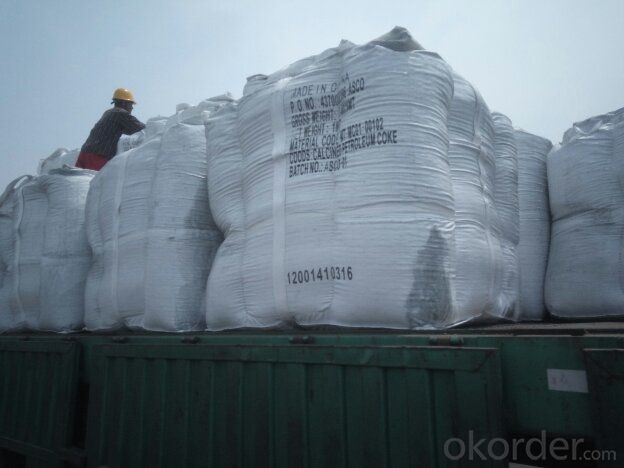

FAQ:
(1)CPC could be as fuel
Petroleum coke is a material relatively low in cost and high in heat value and carbon content with good chemical stability, making it an efficient and costeffective fuel for producing metal, brick and related products.
(2)CPC could be as Graphite Electrodes
Graphite can be produced from lowsulfur needle petroleum coke, which must be heated above 5,432 degrees Fahrenheit.
(3)CPC could be as Anodes
Calcined petroleum coke, often low in sulfur and metallic impurities, is used to make anodes for
the smelting industry.Calcined petroleum coke is mixed with coal tar pitch in the production of
anodes.
- Q: What are the impacts of carbon emissions on coral reefs?
- Carbon emissions have significant impacts on coral reefs. One of the most significant consequences is the process of ocean acidification, caused by the absorption of excess carbon dioxide (CO2) from the atmosphere. As the ocean becomes more acidic, coral reefs struggle to build and maintain their calcium carbonate skeletons, essential for their structure and survival. This can lead to reduced growth rates and weakened reefs, making them more susceptible to damage from storms, disease, and other stressors. Additionally, the rising ocean temperatures resulting from carbon emissions have led to widespread coral bleaching events. When corals experience prolonged exposure to high temperatures, they expel the symbiotic algae (zooxanthellae) living within their tissues, which provide them with essential nutrients and give them their vibrant colors. Without these algae, corals become pale or completely white, a phenomenon known as bleaching. If the stressors subside, corals can recover, but if the bleaching is severe or prolonged, it can lead to coral death and the subsequent degradation of the reef ecosystem. Furthermore, increased carbon emissions contribute to the intensification of storms and other extreme weather events, which pose a direct threat to coral reefs. Stronger storms can physically damage the reefs, breaking apart their fragile structures and reducing their resilience. The resulting sediment runoff from land, often exacerbated by storms, can smother corals and hinder their ability to feed and grow. The impacts of carbon emissions on coral reefs are not only detrimental to these diverse marine ecosystems but also to the millions of people who depend on them for food, income, and coastal protection. Coral reefs support a vast array of marine life, provide a source of livelihood for many communities through fishing and tourism, and act as natural barriers against storm surge and coastal erosion. The degradation of coral reefs due to carbon emissions threatens the livelihoods and well-being of these communities, as well as the overall health and biodiversity of our oceans. To mitigate these impacts, it is essential to reduce carbon emissions by transitioning to cleaner, renewable energy sources, promoting sustainable practices on land to reduce runoff and pollution, and implementing effective management and conservation measures to protect and restore coral reef ecosystems.
- Q: What are the consequences of increased carbon emissions on urban areas?
- Increased carbon emissions have significant consequences on urban areas. One of the most notable impacts is the exacerbation of air pollution. Carbon emissions, particularly from vehicles and industrial activities, contribute to the release of harmful pollutants such as nitrogen oxides and particulate matter. These pollutants can lead to respiratory problems, exacerbate existing health conditions, and increase the risk of lung cancer and cardiovascular diseases among urban residents. Furthermore, increased carbon emissions contribute to the phenomenon of urban heat islands. Carbon dioxide and other greenhouse gases trap heat in the atmosphere, leading to rising temperatures in urban areas. This effect is particularly pronounced due to the abundance of concrete and asphalt surfaces that absorb and radiate heat. As a result, urban areas experience higher temperatures than surrounding rural areas, exacerbating the discomfort and health risks associated with heat stress, especially for vulnerable populations such as the elderly and those with limited access to cooling resources. The consequences of increased carbon emissions on urban areas also extend to the natural environment. Urban green spaces and ecosystems are negatively impacted as higher levels of carbon dioxide can disrupt plant growth and reduce biodiversity. This further exacerbates the loss of natural habitats and the degradation of urban ecosystems, leading to a decrease in the provision of ecosystem services such as air purification, temperature regulation, and stormwater management. In addition to the environmental and health impacts, increased carbon emissions also have economic consequences for urban areas. The cost of mitigating and adapting to climate change-induced challenges, such as flooding and extreme weather events, increases as carbon emissions rise. This puts a strain on local governments' budgets and can lead to higher taxes or reduced funding for other essential services. To address these consequences, it is crucial for urban areas to implement strategies that reduce carbon emissions and promote sustainability. This includes investing in public transportation, encouraging the use of renewable energy sources, promoting energy-efficient buildings, and implementing policies to reduce vehicle emissions. By taking these measures, urban areas can mitigate the negative consequences of increased carbon emissions and create healthier, more sustainable environments for their residents.
- Q: How does carbon contribute to global warming?
- The greenhouse effect, caused by carbon, contributes to global warming. When carbon dioxide (CO2) and other greenhouse gases are released into the atmosphere, they trap heat from the sun, preventing its escape into space. As a result, the Earth's surface temperature increases and global warming occurs. The primary cause of carbon emissions is the burning of fossil fuels such as coal, oil, and natural gas for energy production, transportation, and industrial processes. These activities release significant amounts of CO2 into the atmosphere, which accumulates over time and intensifies the greenhouse effect. Deforestation and changes in land use also play a role in rising carbon levels. Trees and plants absorb CO2 through photosynthesis, acting as a natural carbon sink. However, when forests are cleared, the stored carbon is released back into the atmosphere. Additionally, the loss of trees reduces the overall capacity for CO2 absorption, aggravating the problem. The consequences of increased carbon emissions are extensive. Rising temperatures lead to the melting of polar ice caps and glaciers, resulting in sea-level rise and posing a threat to coastal communities. Moreover, carbon-driven global warming disrupts weather patterns, giving rise to extreme weather events like hurricanes, droughts, and heatwaves. To mitigate the impact of carbon on global warming, efforts must be made to reduce carbon emissions. This can be accomplished by transitioning to renewable energy sources such as solar and wind power, enhancing energy efficiency, promoting sustainable practices in agriculture and forestry, and implementing policies that encourage carbon capture and storage. Addressing carbon emissions is vital in combating global warming and its associated consequences. By comprehending the role of carbon in the greenhouse effect, we can work towards a sustainable future that minimizes the adverse effects of climate change.
- Q: How much carbon does it take for 4 people to barbecue?!
- Hello The amount of charcoal is according to the number, the number of barbecue barbecue food and other circumstances, the amount of each person is different, generally 6 pounds of charcoal enough for 3-5 to use, recommended to get for a little extra, so is not enough, the charcoal is not expired, can not run out of the next and then, put in the house you can also clean the indoor air.
- Q: What are the impacts of carbon emissions on the stability of estuaries?
- Carbon emissions have significant impacts on the stability of estuaries. Increased carbon dioxide levels in the atmosphere lead to ocean acidification, which affects the pH balance of the water in estuaries. This acidification can disrupt the delicate balance of species within the estuary ecosystem, leading to declines in populations of organisms such as oysters, clams, and other shellfish. Additionally, carbon emissions contribute to global warming, which can lead to rising sea levels and increased storm intensity, both of which can cause erosion and loss of habitat in estuaries. Overall, carbon emissions have the potential to disrupt the stability and functioning of estuaries, threatening their biodiversity and ecological services.
- Q: What are the carbon monoxide collection methods?
- Carbon monoxide can only be collected by drainage. Carbon monoxide is insoluble in water, carbon monoxide is poisonous, and the density is very close to that of the air, so it can not be collected with exhaust air. It can only be drained. Here are some gas collection methods and the types of gases they target:Downward exhaust air: H2Upward air method: CO2, O2, SO2Drainage: H2, COWater insoluble gases can be drained by gas collectionThe density is not large and does not react with the gas in the air. It can be used for the upper airA gas that is smaller than air and does not react with gas in the air can be used to exhaust air (e.g., H2)As long as the relative molecular mass of the gas is greater than 29, the density is basically larger than that of the air
- Q: What is carbon neutral construction?
- Carbon neutral construction entails a sustainable approach to constructing and designing structures that aims to minimize or counterbalance the amount of carbon emissions generated during the construction process. The objective is to achieve equilibrium between the carbon emissions released into the atmosphere and those that are eliminated or offset through various measures. To accomplish carbon neutrality in construction, several strategies can be employed. Firstly, the implementation of energy-efficient design principles helps reduce the overall energy consumption of the building. This includes incorporating insulation, efficient HVAC systems, and energy-saving appliances and lighting. In addition, sustainable building materials are utilized, such as recycled materials or those with a minimal carbon footprint. This decreases the energy required for material production and transportation, thus minimizing carbon emissions. Moreover, renewable energy sources are integrated into the construction process. This may involve the installation of solar panels, wind turbines, or geothermal systems to generate clean energy for the building's operations. By reducing reliance on fossil fuels, carbon emissions associated with energy consumption are significantly decreased. Carbon offsetting is another crucial element of carbon neutral construction. This entails investing in projects or initiatives that reduce or eliminate greenhouse gas emissions elsewhere, thereby compensating for the emissions produced during construction. Examples of carbon offsetting activities include reforestation projects, investment in renewable energy initiatives, or support for methane capture programs. Ultimately, carbon neutral construction aims to minimize the environmental impact of building construction and operation by reducing carbon emissions throughout the entire lifespan of the building. By adopting energy-efficient design principles, utilizing sustainable materials, integrating renewable energy sources, and offsetting carbon emissions, carbon neutral construction contributes to the mitigation of climate change and the creation of a more sustainable future.
- Q: Carbon steel with carbon steel, carbon steel yuan yuan is the same? The trouble to know the answer urgently
- Not the same! Simply say: the high quality carbon steel or carbon steel. Specifically speaking is the carbon content of less than 0.08%. and carbon steel compared to its quality is excellent, there are strict requirements to ensure the chemical composition and mechanical properties, phosphorus and sulfur are high quality carbon steel eliminating lower impurity content.
- Q: How are carbon fibers used in manufacturing?
- Carbon fibers are widely used in manufacturing due to their exceptional strength, low weight, and high stiffness. These fibers are typically combined with a matrix material, such as epoxy resin, to create a composite material with enhanced properties. One of the primary applications of carbon fibers in manufacturing is in the aerospace industry. Carbon fiber composites are used to produce lightweight and durable components for aircraft and spacecraft, including wings, fuselages, and propellers. The high strength-to-weight ratio of carbon fibers allows for improved fuel efficiency and increased payload capacity. In the automotive industry, carbon fibers are used in the production of high-performance vehicles. By incorporating carbon fiber composites into the construction of car bodies, manufacturers are able to reduce weight, improve fuel efficiency, and enhance overall performance. Carbon fibers are also utilized in the manufacturing of various car components, such as steering wheels, brake systems, and suspension parts, to enhance their strength and durability. Carbon fiber composites are also extensively utilized in the sporting goods industry. They are commonly used in the production of bicycles, tennis rackets, golf clubs, and fishing rods, among others. The use of carbon fibers in these applications allows for lighter and more responsive equipment, resulting in improved performance for athletes. Furthermore, carbon fibers find application in the construction industry. They are used to reinforce concrete structures, such as bridges and buildings, to enhance their strength and durability. Carbon fiber-reinforced polymers (CFRPs) are also used in the repair and retrofitting of existing structures, providing additional strength and extending their lifespan. In summary, carbon fibers are used in manufacturing to create lightweight, strong, and durable composite materials. Their applications range from aerospace and automotive industries to sporting goods and construction. The utilization of carbon fibers offers numerous advantages, including improved performance, fuel efficiency, and overall product quality.
- Q: What are the main sources of carbon on Earth?
- The main sources of carbon on Earth are both natural and anthropogenic (caused by human activity). In terms of natural sources, carbon is present in the Earth's atmosphere in the form of carbon dioxide (CO2), which is released through natural processes such as volcanic eruptions, respiration by plants and animals, and the decay of organic matter. Carbon is also found in the Earth's lithosphere in the form of carbonate rocks, such as limestone and dolomite, which are formed from the shells and skeletons of marine organisms. Anthropogenic sources of carbon are primarily associated with the burning of fossil fuels, such as coal, oil, and natural gas, for energy production and transportation. When these fossil fuels are burned, carbon dioxide is released into the atmosphere, contributing to the greenhouse effect and climate change. Deforestation and land-use changes also release carbon stored in trees and vegetation into the atmosphere. Additionally, human activities like industrial processes, cement production, and waste management contribute to the emission of carbon dioxide and other greenhouse gases. These activities release carbon that has been locked away for millions of years, significantly altering the natural carbon cycle. Overall, while carbon is naturally present on Earth, human activities have significantly increased its release into the atmosphere, leading to concerns about climate change and the need for sustainable practices to reduce carbon emissions.
Send your message to us
Calcined Petroleum Coke as Injection Carbon
- Loading Port:
- Shanghai
- Payment Terms:
- TT OR LC
- Min Order Qty:
- 19.6
- Supply Capability:
- 1006 m.t./month
OKorder Service Pledge
OKorder Financial Service
Similar products
Hot products
Hot Searches
Related keywords
